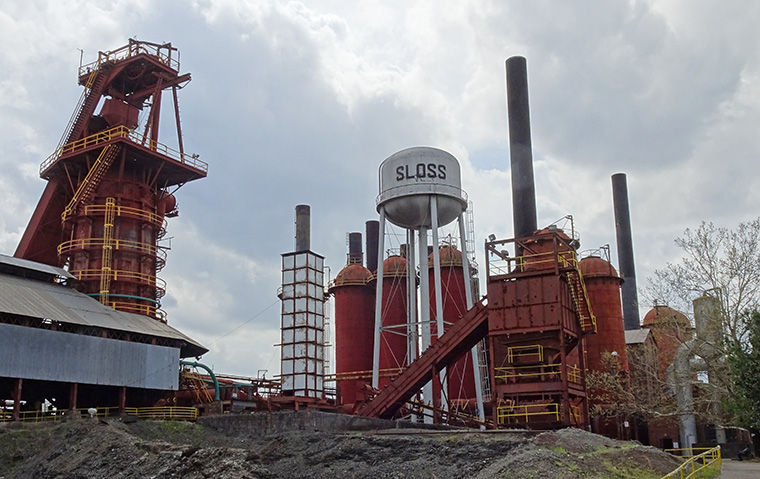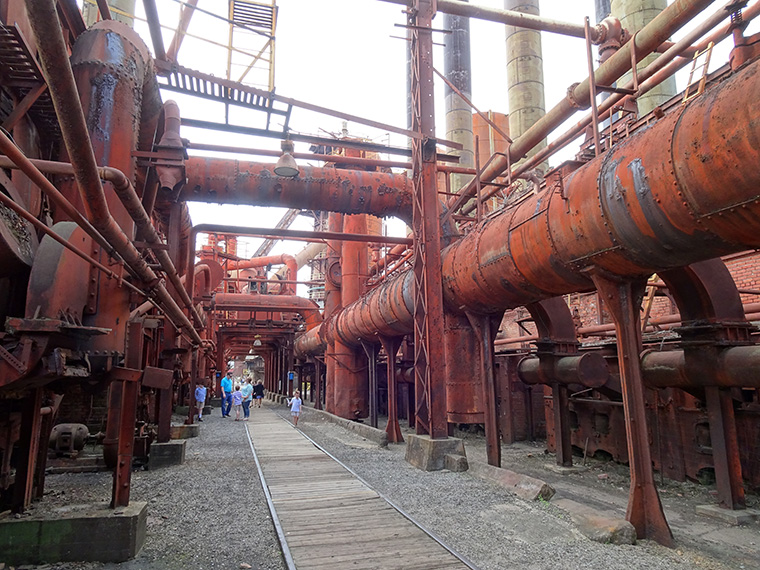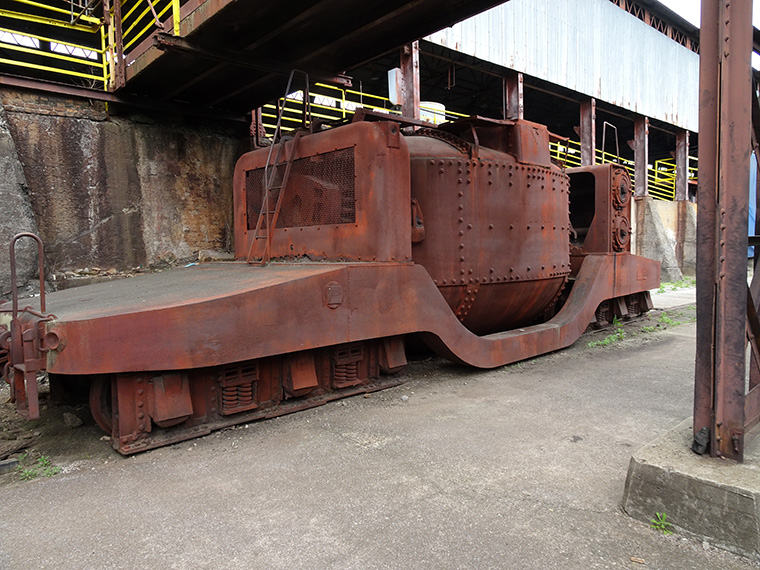After a great, late Sunday buffet breakfast I hit the road to drive about 150 miles from Columbus, GA to Birmingham, AL where I made my one stop of the day at the Sloss Furnaces National Historic Landmark.
Iron and steel production were the economic foundations of the city of Birmingham from the late 19th century to the 1960s. All the raw materials needed for iron extraction could be found within 15 miles and manufacturers controlled mining, transportation and production which made the operation efficient and profitable. Between 1880 and 1900 the population grew from 3,000 to 38,000 and it reached a peak of 340,000 in 1960. Since the closure of many iron and steel facilities it has now declined to 212,000.
“Sloss Furnace” opened in 1882 but most of the existing structures date from a 1920 update. As a former science teacher who has taught some chemistry I find it fascinating to see how much equipment, ingenuity and manpower was required to achieve something I described to students in one lesson. However, I realize that it’s of limited general interest so I’ll just add a few photos.
Today’s road video and route map
A general view of the Sloss Furnace site showing one of the blast furnaces on the left.
There were two blast furnaces and this is looking down the walkway at all of the infrastructure needed to deliver the raw materials to one of them.
Inside one of the stock tunnels where trains brought in iron ore to be dumped in a hopper below the metal grid . This would then be carried to the top of the furnace up the sloping conveyor you can see on the left.
Most of the iron produced here flowed directly from the bottom of the furnace into sand casts to create “pig iron” This ladle car was insulated so it could carry molten iron (at over 3,000 F /1,650 C) from the bottom of the furnace to special casts elsewhere on site.

Good thing you got out alive. Saw a program on this place once and it’s terribly haunted!
I’m not surprised. I’m sure many people perished there over its lifetime.